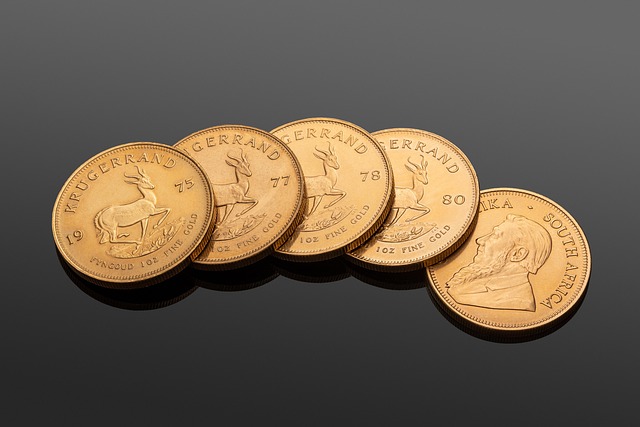The Role of Patience in Successful Investing
Investing is often portrayed as a fast-paced environment filled with action and immediate gratification. However, a quieter and more reflective trait often leads to success in the financial markets: patience. In an era where information travels at the speed of light and market fluctuations can create a whirlwind of emotional responses, the power of patience can be a distinguishing factor for successful investors.
Understanding Patience in Investing
Patience in investing involves the ability to wait for the right opportunities, to stick to a well-thought-out strategy, and to resist the temptation to react hastily to market noise. Investing is not merely about choosing the right stocks or assets; it is also about timing, discipline, and emotional stability. The most successful investors understand that their journey is often more of a marathon than a sprint, demanding long-term planning and a serene approach to market volatility.
The Psychological Aspect of Investing
Investing can evoke a range of emotions, from excitement at rising prices to fear during market downturns. These emotions often cloud judgment and lead to impulsive decisions. Psychology plays a critical role in investing, and many studies have shown that emotional decision-making can sabotage even the most well-laid investment plans.
Patience allows investors to step back, assess the situation, and make rational decisions based on data and analysis rather than react to emotions. This sense of calm is invaluable during times of market turmoil when fear and panic can lead to hasty sell-offs or missed opportunities.
The Importance of a Long-Term Perspective
A long-term perspective is a hallmark of patient investors. Investing isn’t just about buying low and selling high; it’s about understanding the underlying value of an asset and the potential for growth over time. Investors with patience are more likely to hold onto their investments long enough to allow them to appreciate in value. Historically, the stock market has returned about 7-10% annually over the long run, but this growth is often punctuated by periods of volatility.
Short-term fluctuations can deceive investors into thinking they need to respond quickly. In contrast, those who maintain a long-term outlook recognize that these ebbs and flows are part of the investing cycle and tend to avoid selling off during downturns. Instead, they view such times as potential buying opportunities.
Identifying Opportunities
Successful investors know how to identify quality investments that may take time to realize their full potential. This requires a robust analytical approach, including comprehensive research and an understanding of market trends. However, even with thorough analysis, the market can often lag behind an asset’s intrinsic value.
The act of identifying good investments is itself a test of patience. It may take considerable time to locate an undervalued stock or to watch a potentially profitable investment stagnate before it finally takes off. Investors who embrace patience can afford to wait for the right moments, understanding that good things take time.
Compounding Returns and the Power of Time
One of the most significant advantages of a patient investment strategy is the magic of compounding returns. When investors choose to remain invested over long periods, they benefit from the compounding effect, where earnings are reinvested to generate even more earnings. This effect accelerates wealth accumulation over time and highlights how time in the market often prevails over timing the market.
For example, if an investor begins investing at a young age, even a modest differential in returns can lead to substantial wealth differential by retirement age, thanks to compounding. The earlier one starts and the longer one stays invested, the larger the potential returns.
Building Investment Discipline
A focus on patience fosters a disciplined approach to investing. It encourages investors to develop a clear investment strategy and stick to it, regardless of external pressures or market sentiment. A well-defined investment plan often includes goals, risk tolerance, asset allocation, and exit strategies. When investors have a plan in place, patience becomes much easier to maintain.
Moreover, a disciplined approach allows investors to avoid common pitfalls such as market timing, emotional trading, and reactiveness to news, which can often lead to suboptimal decisions. By adhering to a consistent investment strategy, patient investors can improve their potential for higher returns while mitigating risks associated with market volatility.
Avoiding Behavioral Biases
Many investors fall victim to behavioral biases that can negatively impact their investment decisions; these include the fear of missing out (FOMO), loss aversion, and overconfidence. Patience acts as a buffer against these biases. Investors who practice patience are more inclined to focus on their long-term objectives, rather than being swayed by market hype or panic.
For instance, when a popular stock skyrockets, FOMO may drive impulsive purchases at inflated prices, while a patient investor will wait for the right valuation. Similarly, in bearish markets, loss aversion may prompt quick sell-offs, whereas a patient investor understands these downturns are often temporary.
Establishing a Routine for Monitoring Investments
While patience is vital for long-term growth, it does not mean that investors should neglect their portfolios. Establishing a routine for monitoring investments allows for ongoing assessment and adjustment without succumbing to emotional impulses. This routine may include periodic reviews of portfolio performance, rebalancing asset allocations, and staying informed about broader economic trends.
However, the key lies in balancing due diligence with patience. Investors should remain vigilant but avoid obsessively checking stock prices or reacting impulsively to short-term performance. A measured approach to monitoring can reinforce patience and help maintain focus on long-term goals.
Case Studies of Successful Patient Investors
History is filled with examples of successful investors whose fortunes can be attributed to their patient strategies. Warren Buffett, perhaps the most famous investor of all time, has often cited patience as a critical factor in his success. He famously said, “The stock market is designed to transfer money from the Active to the Patient.” Buffett’s investment philosophy emphasizes the importance of buying undervalued companies and holding them for the long term, allowing them to grow in intrinsic value.
Another notable example is Peter Lynch, who managed the Fidelity Magellan Fund and achieved impressive returns over many years. Lynch focused on investing in what he understood, maintaining a patient mindset as he weathered market volatility. His approach exemplifies how a patient, long-term strategy can yield significant returns, contrasting sharply with those who chase trends.
Conclusion: The Virtue of Patience
In the world of investing, patience is not just a virtue; it is often the cornerstone of success. It enables investors to remain grounded amidst market noise, facilitates long-term thinking, and helps in building a disciplined investment strategy. Through patience, investors can maximize their potential for returns, avoid emotional decision-making, and ride out the inevitable fluctuations that come with market cycles.
In a landscape that often glorifies quick wins and immediate results, cultivating patience can distinguish successful investors from those chasing fleeting opportunities. Ultimately, understanding the role of patience in successful investing can lead to more informed decisions, increased financial security, and the ability to enjoy the benefits of compound growth over time.



